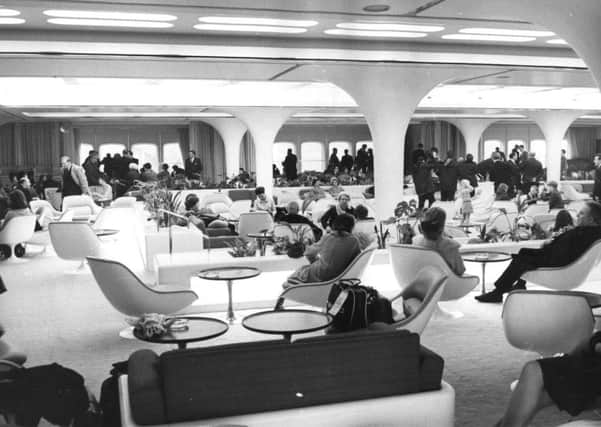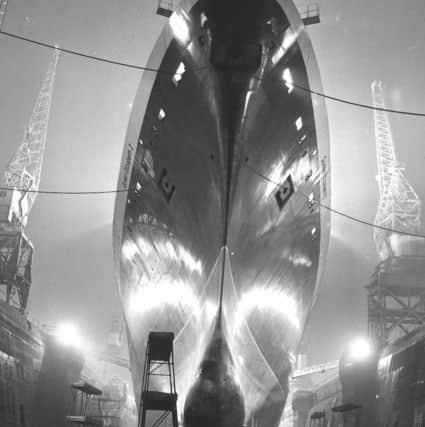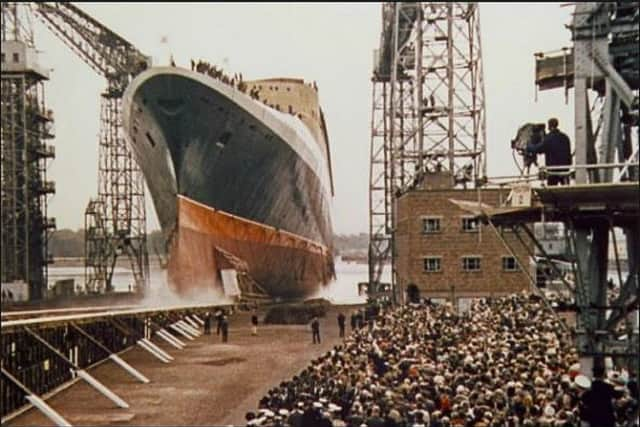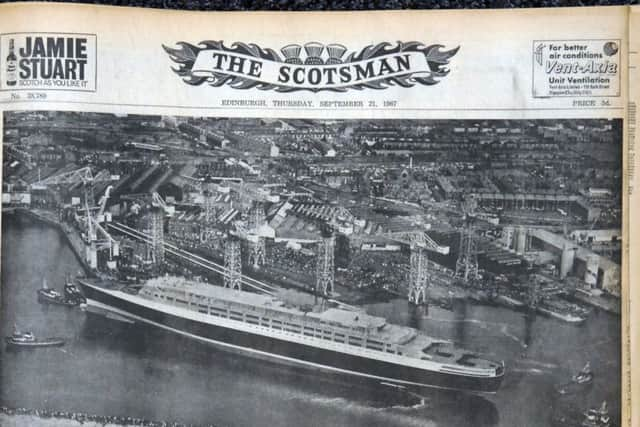The lost glamour of the Clyde-built Cunard liners


Tens of thousands of litres of wine were also stowed away on what is arguably the world’s most famous vessel with one million tea bags also required to keep its passengers refreshed on world cruises and transatlantic crossings.
This year marks the 50th anniversary of the The QE2, forged in the heat and the noise of John Brown’s yard at Clydebank, being launched by the Queen at on September 20 1967.


Advertisement
Hide AdAdvertisement
Hide AdConsidered the last of the true Ocean Liners, the QE2 hit new heights in comfort and on-board opulence.
Contemporary advertising for the vessel said: “The only thing QE2 has in common with other ships is that she floats.
“The only thing she has in common with other great Cunarders is a legend called service’.


Advertisement
Hide AdAdvertisement
Hide AdBy the 1980s, Cunard claimed it would take a passenger four months to experience all the QE2 had to offer given its shopping malls, theatres, swimming pools and cinemas.
The QE2 was also the last of the great Cunard liners to be launched on the Clyde.
As it took to the water for the first time, an era of shipbuilding that produced 16 “Cunarders” at John Brown’s between 1899 and 1967 was brought to an end.
This golden age of Cunard and the Clyde is now being marked in a new exhibition Style at Sea at the Scottish Maritime Museum in Irvine, Ayrshire.


Advertisement
Hide AdAdvertisement
Hide AdAbigail McIntyre, curator of the museum, said: “With the 50th anniversary of the launch of the Clyde-built QE2 on 20th September, we wanted to celebrate the enduring relationship between the Clyde, John Brown and Company and Cunard which played such a role in the great heyday of ocean-going liners.
“From the great achievements in shipbuilding to its life saving wartime service through and the glitz of the travelling Hollywood stars, it’s a wonderful and important story to be enjoyed by all.”
The exhibition explores how the Cunard ships evolved from immigrant passenger boats to lavish floating palaces which attracted Hollywood glamour and royalty with its legendary levels of luxury and service.
Also on show at the exhibition is the famous QE2 Ward Room Book, which was signed by those dining with the Captain.


Advertisement
Hide AdAdvertisement
Hide AdThe ‘who’s who’ includes the signatures of the Queen and the Duke of Edinburgh, Gracie Fields, Elizabeth Taylor, Richard Burton and Nelson Mandela amongst others.
Each Clyde-built Cunard ship pushed the barriers of speed, technology and luxury. Whilst the Queen Mary needed 406 gallons of fuel to move a mile, the QE2 only took 110 gallons.
Over 40 years of service, the QE2 sailed 5.6 million miles, carried 2.5 million passengers and completed 806 transatlantic crossings.
The exhibition also examines looks at how these state of the art vessels served in wartime outrunning the enemy with their sheer speed.
Advertisement
Hide AdAdvertisement
Hide AdWinston Churchill was convinced that the great Cunard liners, Queen Mary, Queen Elizabeth and Aquitania, which were pressed into service as troop carriers, shortened the Second World War by at least a year. Their speed allowed them to outrun both German submarines and their torpedoes.
Cunard first launched in 1840 as the British and North American Royal Mail Steam-Packet Company,


Chris Walker, events and exhibitions officer at the Scottish Maritime, said Charles Dickens was among its first passengers who would wash their own plats and take their fresh milk from a live cow hanging above the deck by a system of ropes.
He added: “Style at Sea charts the fascinating journey of the Cunard Line which, working with John Brown and Company, overcame the challenges of two world wars and the Great Depression to launch luxury cruising which is so popular today.”
Advertisement
Hide AdAdvertisement
Hide AdThe QE2, which operated as a cruise ship and transatlantic liner until 2008, is now docked permanently in Dubai where plans to turn it into a floating hotel have floundered.
Her successor, the RMS Queen Mary 2, was built in France and began service in 2004.
As well as a football pitch sized area for deck games, indoor and outdoor swimming pools and theatres, the Queen Mary was the first ship with a shopping centre. The centre included 24 shops from jewelers and tobacconists to high end clothing shops and even a WH Smith.
